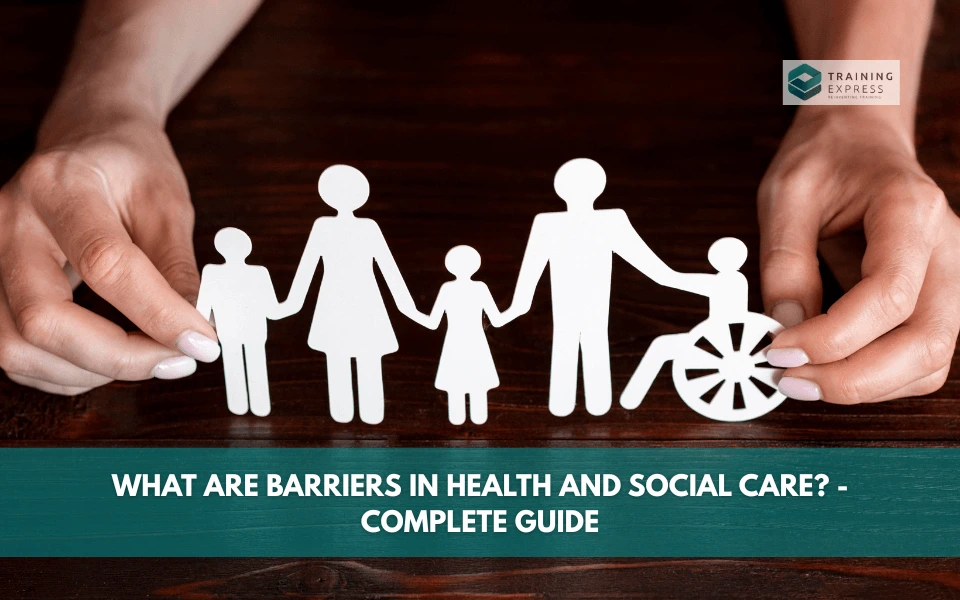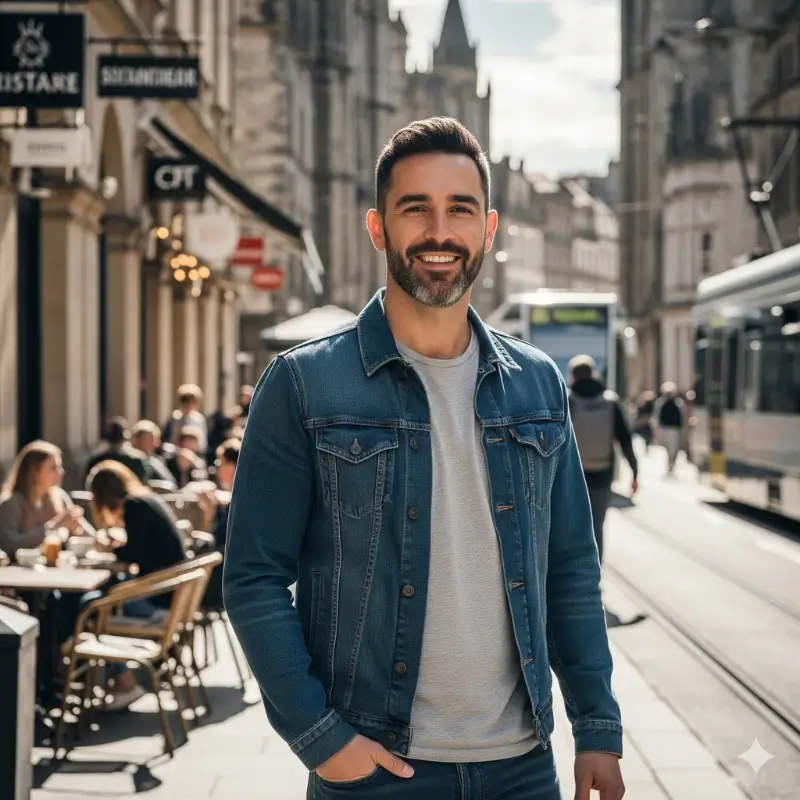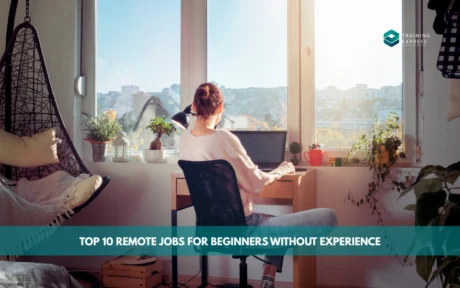
Barriers in health and social care aren’t just minor inconveniences. They can be life-changing and even life-threatening. Think about a pregnant woman in a rural village who can’t get to a hospital in time because there’s no reliable transport. Or consider a refugee who avoids medical attention due to language gaps and fear of discrimination. These aren’t isolated incidents. They’re everyday realities for millions of people.
Access to health and social care is a fundamental human right. It’s the foundation for building a healthy, thriving society. But for many, access isn’t so simple. In fact, it can feel like navigating a maze filled with dead ends and detours. Whether you’re an elderly patient needing home care, a non-English speaker visiting a clinic, or a healthcare provider trying to meet everyone’s needs—barriers are everywhere.
In this complete guide, we’ll break down exactly what these barriers are, how they show up in different forms, and what can be done to overcome them. These barriers come in many forms—like culture clashes, money issues, hard-to-access places, and poor online access. We’ll explain each one clearly and show how they affect people. You’ll also learn simple ways to help fix them. Together, we can make care fair and kind for all.
In This Guide
What Are Barriers in Health and Social Care?
Barriers in health and social care refer to any obstacle that prevents individuals from accessing the care and support they need. These can range from tangible issues like physical inaccessibility to less visible ones like cultural stigma or bureaucratic red tape. While the causes are varied, the outcome is often the same: people aren’t getting the help they need, when they need it.
These barriers don’t just impact patients. They also affect healthcare professionals who are doing their best under challenging circumstances. Imagine a nurse trying to explain a treatment plan to a patient who doesn’t speak the same language. Or a social worker juggling a caseload that’s impossible to manage due to system inefficiencies. The frustration is mutual—and systemic.
For vulnerable populations, such as the elderly, disabled, immigrants, or those living in poverty, these challenges can be even more pronounced. Lack of access can lead to worsening health conditions, social isolation, and reduced quality of life. It’s not just a matter of convenience; it’s a matter of equity, justice, and human dignity.
Types of Barriers in Health and Social Care
Barriers come in many forms. They may be structural, cultural, financial, or even technological. Let’s take a closer look at the most common types and how they show up in real-world scenarios.

Financial Barriers
Let’s face it—money matters. Financial barriers can stop people from even stepping through the door of a healthcare facility. Even in countries with public health systems, there are still hidden costs: prescriptions, transport, childcare, time off work. For those living paycheck to paycheck, these costs add up quickly.
Private healthcare, of course, is a different beast altogether. Without insurance, many treatments are simply unaffordable. And even with insurance, co-pays and deductibles can be burdensome. This is particularly problematic for those with chronic conditions that require ongoing medication and appointments.
Unemployment, underemployment, and economic instability hit marginalized communities the hardest. When faced with the choice between food on the table or a visit to the doctor, health often takes a backseat. This creates a cycle of neglect and worsening conditions that could have been prevented with early intervention.
To break this cycle, we need systemic changes—things like sliding scale payment models, subsidies, or even universal healthcare. But in the meantime, local communities can help by providing free clinics, health vouchers, and social support services that ease the burden.
Cultural Barriers
Culture plays a powerful role in shaping how people view health, illness, and medical care. What’s considered normal in one culture may be taboo in another. For instance, some communities may rely heavily on traditional healers or home remedies and be skeptical of modern medicine. Others may have religious beliefs that influence medical decisions—like refusing blood transfusions or male doctors examining female patients.
Gender roles can also complicate access to care. In some cultures, women may need permission from male family members to seek treatment, or they might avoid discussing health issues altogether due to modesty concerns. These cultural nuances can create deep misunderstandings between patients and providers, especially when sensitivity or awareness is lacking.
Healthcare providers may unintentionally offend or alienate patients by failing to respect these cultural differences. This can lead to mistrust, non-compliance with treatment, and even complete disengagement from the health system. Addressing cultural barriers means fostering cultural competence among professionals—knowing when to ask, listen, and adapt.
Structural Barriers
Structural barriers are baked into the system itself. These include long wait times, complicated procedures, fragmented services, and inadequate coordination between different agencies. You might have to fill out endless forms, get multiple referrals, or wait months for an appointment. And if you’re dealing with multiple issues—like mental health, housing, or disability services—it becomes even more overwhelming.
Bureaucracy can feel like a fortress that’s impossible to navigate without insider knowledge. Imagine an elderly person trying to apply for social care support but getting lost in a sea of paperwork. Or a person with a disability needing assistance but falling through the cracks because no one coordinates their care.

When systems don’t talk to each other, patients suffer. They’re forced to repeat their stories, re-submit documents, and jump through hoops just to get basic help. It’s exhausting, demoralizing, and often completely avoidable. Streamlining services, simplifying procedures, and investing in case coordination can go a long way in removing these hurdles.
Physical Barriers
Physical barriers are some of the most visible and yet most overlooked obstacles in health and social care. These include things like inaccessible buildings, lack of ramps or elevators, narrow doorways that can’t accommodate wheelchairs, or examination rooms that aren’t equipped for patients with mobility issues. It also extends to a lack of appropriate signage for visually impaired individuals and inadequate auditory support for those with hearing difficulties.
Mobility aids, too, are often insufficient or unavailable. A care facility might lack hoists, walkers, or proper bedding, which puts both patients and caregivers at risk. These shortcomings can turn basic healthcare tasks into dangerous or impossible missions. And it’s not just about disabilities—think about parents with strollers, or the elderly who struggle with stairs. When healthcare settings aren’t designed inclusively, entire groups are effectively shut out from services they desperately need.
Geographical Barriers
Not everyone lives near a hospital, clinic, or pharmacy. Geographical barriers are especially harsh for those in remote or rural areas, where the nearest healthcare provider could be hours away. And if you don’t have access to a car—or if poor weather conditions block the roads—you’re out of options.
This isolation affects more than just access to routine care. In emergencies, response times can be dangerously long. Delayed treatment often leads to more serious complications or even fatalities. Additionally, follow-up care becomes inconsistent when patients can’t regularly visit a facility. It’s hard to build a relationship with your healthcare provider if you only see them once a year, and that distance can create a sense of detachment and mistrust.
Even when services are technically available, there may be a shortage of professionals willing to work in those areas. This leads to overworked staff, long waitlists, and limited specialist care. Telehealth and mobile clinics are promising solutions, but they’re not always available or practical, especially where internet access is limited. Addressing geographical barriers means not just bringing care closer to people—but also making sure that care is comprehensive and sustainable.
Language Barriers
Language should never be a life-or-death issue—but in health and social care, it often is. People who don’t speak the local language well face serious risks. Misunderstandings can lead to wrong diagnoses or unsafe use of medicine. Healthcare is full of complex terms. Without interpreters, patients may rely on family, which can cause mistakes. Some stay quiet, afraid to ask for help.
It’s not just speech—reading matters too. Many forms and health tools are only in one language, leaving many people out.
The answer? Make language support part of the system. Hire bilingual staff. Use interpreters. Translate all materials clearly and fully.
Transportation Barrier
Getting to care is often a bigger problem than getting care. Many people, especially in rural or low-income areas, don’t have access to buses, trains, or reliable transport. Even when transport exists, it may not suit those with disabilities, the elderly, or parents with small children.
Regular appointments—like for dialysis or therapy—become hard to keep without a way to get there. Travel costs also add up, making care unaffordable for some.
The answer? Use local, smart solutions:
– Free or low-cost shuttles
– Taxi or ride-share vouchers
– Mobile clinics that visit patients
No one should miss care because they can’t get there. Fixing transport makes care fairer for all.
What Is the Most Common Barrier to Healthcare?
Among all the different types of barriers, financial barriers are often cited as the most common and persistent. Whether it’s the inability to afford insurance, copayments, or even basic transportation to a clinic, money remains a powerful gatekeeper to healthcare access.

Real-World Statistics Highlighting Financial Barriers
Let’s look at some real-world numbers. In the United States, the impact of financial barriers is stark. According to the Federal Reserve, in 2023, 27% of American adults reported skipping some form of medical treatment due to cost . This figure underscores the significant portion of the population that faces economic hurdles in accessing healthcare services. The situation is even more pronounced among uninsured individuals. Data reveals that 46% of uninsured adults in the U.S. skipped medical treatment because they couldn’t afford it, compared to 25% of those with insurance . This disparity highlights the critical role that insurance coverage plays in mitigating financial barriers to healthcare.
In countries with public healthcare systems, such as the United Kingdom, financial barriers still persist, particularly concerning out-of-pocket expenses. For instance, NHS dentistry services are subject to copayments of up to £256.50 (approximately $365) per course of treatment . Additionally, outpatient prescription drugs in the UK require a copayment of £8.80 (approximately $12.50) per prescription. These costs can be burdensome for low-income families or individuals on fixed incomes, potentially deterring them from seeking necessary care.
Underlying Causes of Financial Barriers
Several systemic issues contribute to the persistence of financial barriers in healthcare:
- Income Inequality: Disparities in income levels mean that lower-income individuals often struggle to afford healthcare services, even in countries with public healthcare systems.
- Healthcare Privatization: Increased privatization can lead to higher costs for services, making them less accessible to economically disadvantaged populations.
- Gaps in Social Support Systems: Insufficient social safety nets can leave vulnerable individuals without the necessary support to afford healthcare.
- Rising Healthcare Costs: Inflation and escalating costs of medical services and medications further exacerbate financial barriers.
Intersecting Challenges
Financial barriers often intersect with other obstacles, compounding their effects. For example, an unemployed individual may also face challenges such as mental health issues, lack of transportation, or social isolation. These overlapping barriers can create a cycle of disadvantage, making it increasingly difficult for individuals to access the care they need.
Strategies to Mitigate Financial Barriers
Addressing financial barriers requires a multifaceted approach:
- Expanding Insurance Coverage: Implementing policies that increase access to affordable insurance can reduce out-of-pocket expenses for individuals.
- Financial Assistance Programs: Providing subsidies or sliding-scale payment options can help lower-income individuals afford necessary care.
- Investing in Preventive Care: Focusing on preventive measures can reduce the need for more expensive treatments down the line, ultimately lowering overall healthcare costs.
- Enhancing Social Support Systems: Strengthening social safety nets can provide additional resources for those facing economic hardships.
By implementing these strategies, healthcare systems can work towards reducing financial barriers and ensuring that all individuals have equitable access to necessary medical services.

Who Defines Barriers in Health and Social Care?
Barriers in health and social care aren’t just noticed by patients—they’re defined and addressed by a network of stakeholders, including policymakers, healthcare providers, and the service users themselves. Understanding how these barriers are identified is key to dismantling them effectively.
Policymakers play a critical role in this process. They rely on data, research studies, and public health reports to shape regulations and allocate resources. For example, if data shows that a specific demographic is not accessing care, investigations can begin to identify the root causes—whether it’s location, cost, discrimination, or another factor.
Healthcare providers are often the first to notice barriers in real-time. They see when patients miss appointments, misunderstand instructions, or struggle with paperwork. Their feedback is crucial because it offers a frontline perspective on what’s working—and what’s not. Providers can also report systemic issues, such as understaffed departments or lack of language support, that need higher-level intervention.
But perhaps the most valuable insights come from service users themselves. After all, they’re the ones navigating these obstacles daily. Surveys, focus groups, complaint systems, and community forums offer platforms for patients and families to share their experiences. This feedback is gold—it highlights the lived realities behind the statistics and can guide meaningful changes.
Several tools are used to define and measure barriers:
- Needs Assessments: These evaluate the services required by a community and identify gaps in provision.
- Equality Impact Assessments (EIAs): These ensure that policies and practices don’t unintentionally discriminate.
- Audits and Reviews: Regular internal checks that evaluate how accessible and effective services are.
By combining top-down data analysis with bottom-up lived experiences, we can get a clear, accurate picture of the real barriers in health and social care—and start building better systems around them.
How to Overcome Barriers in Health and Social Care
Breaking down barriers in health and social care requires a multi-layered approach. No single solution will work for everyone, but when strategies are combined thoughtfully, they can significantly improve access, equity, and quality of care. Let’s dive into some of the most effective methods.

Training and Awareness
One of the most impactful tools for reducing barriers is education. Staff training in cultural competence, disability awareness, mental health sensitivity, and effective communication can transform the care experience for patients. It’s not about ticking boxes—it’s about genuinely understanding the people you’re trying to help.
That’s why professional development is so important. A course like the Level 3 Diploma in Health and Social Care equips care workers with the skills and knowledge needed to support diverse individuals more effectively.
Imagine walking into a clinic where the receptionist greets you in your language, the nurse respects your cultural norms, and the doctor takes time to explain your options without judgment. That level of care doesn’t happen by accident—it’s the result of ongoing, intentional training.
Involving service users in training programs can be especially powerful. Hearing directly from people who’ve experienced barriers brings the issue to life and promotes empathy over assumptions.
Improving Access
Access isn’t just about ramps and wide doors. It means removing every barrier that stops people from getting care. One smart solution is bringing services closer. Mobile units or pop-up clinics in schools, workplaces, or local centres can help reach more people.
Transport is key too. Health services can team up with councils to offer shuttles or low-cost rides—especially for the elderly or those in rural areas.
Appointment systems need to fit real lives. Not everyone can come in during 9–5 hours. Walk-ins, late hours, and virtual visits give people more choice. Even small changes like same-day bookings or text reminders can boost attendance.
Forms also matter. They should be short, clear, in many languages, and come with help if needed.
The goal? See care through the user’s eyes—and make it simpler for everyone.
Use of Technology
Technology is changing how we give and receive care. Tools like telehealth let people in remote areas speak to doctors without long travel. This is helpful for mental health check-ins, ongoing treatments, and recovery support. It saves time, lowers costs, and improves access for many.
Apps and digital tools also help break language barriers. Translation apps and speech tools let patients understand doctors better, even if they don’t speak the same language or have trouble speaking. Digital health records make care smoother by keeping all health info in one place, so doctors can work together and treat faster.
But not everyone has access to the internet, smart devices, or knows how to use them. That’s a problem. To fix this, clinics can offer tech help, simple online systems, and free devices or Wi-Fi for those who need it. When designed for all, technology becomes a powerful tool to make care easier, faster, and fair for everyone.
Policy and Funding
Let’s be real—without the right policies and funding, even the best ideas stay stuck on paper. Government and institutional support such as NHS is essential for making systemic changes that tackle barriers head-on.
Policies that promote universal healthcare access, anti-discrimination laws, and inclusive service standards are the backbone of an equitable health system. These policies should be regularly updated based on real-world evidence and community feedback, not just political agendas.
Read our latest blog: Policies and procedures in health and social care
Funding is equally critical. Many of the barriers we’ve discussed—like long wait times, understaffed clinics, or lack of translation services—stem from under-resourcing. Governments need to invest not just in medical treatments, but also in the infrastructure and personnel that support holistic care.

Subsidies for low-income patients, grants for community health projects, and incentives for healthcare workers in underserved areas can make a tangible difference. Think of it as planting seeds for a healthier, more connected society.
Nonprofits and private donors can also play a role, especially when public funding is limited. Partnerships between government, private sector, and community organizations can unlock resources and innovations that might otherwise be out of reach.
The key is long-term commitment. Quick fixes don’t work for deep-rooted issues. But with thoughtful policies, adequate funding, and a willingness to listen and adapt, we can create a health and social care system that truly works for everyone.
Final Words
Barriers in health and social care are complex, layered, and deeply ingrained—but they’re not unbreakable. From cultural misunderstandings and social stigma to financial strain and physical inaccessibility, each obstacle has a ripple effect that touches the lives of millions.
Understanding these barriers is the first step. Whether it’s a nurse adjusting her communication style, a policymaker allocating more funds for mobile clinics, or a community leader organizing transport for the elderly—every action counts. True accessibility means more than just opening the door; it means making sure people feel welcome, understood, and supported once they walk through it.
The path forward lies in awareness, empathy, and collaboration. By investing in training, embracing technology, removing financial burdens, and creating inclusive policies, we can start to dismantle the invisible walls that keep people from living healthy, fulfilling lives.
Let’s not wait for systems to catch up—let’s push them to evolve.
Frequently Asked Questions
What is the most common barrier to healthcare?
The most common barrier to healthcare is cost. High medical expenses, including insurance premiums, copays, and prescription costs, often prevent people from seeking timely care. According to studies, nearly 30% of Americans skip medical services due to financial constraints. Lack of insurance coverage exacerbates this issue, particularly for low-income individuals. Other barriers like transportation or limited provider availability exist, but cost remains the primary obstacle. Solutions include expanding affordable insurance options, telehealth services, and community health programs to improve access.
What are intellectual barriers in health and social care?
Intellectual barriers in health and social care refer to challenges individuals with cognitive or learning disabilities face in accessing services. These include difficulty understanding medical information, navigating complex systems, or communicating needs effectively. For example, jargon-heavy explanations or inaccessible formats like dense text can exclude people. To overcome these, providers can use clear language, visual aids, or tailored support plans. Ensuring staff training on intellectual disabilities and offering personalized care improves inclusivity. By addressing these barriers, health and social care systems can enhance equity, ensuring everyone receives understandable, accessible support, ultimately improving outcomes for diverse populations.
What are resource barriers in health and social care?
Resource barriers in health and social care are limitations that hinder access to quality services, such as insufficient funding, staff shortages, or lack of equipment. These barriers can lead to long wait times, inadequate facilities, or limited access to specialized care, disproportionately affecting vulnerable populations. For example, rural areas may lack nearby clinics, while understaffed hospitals struggle to meet patient needs. Overcoming these requires increased investment, workforce training, and innovative solutions like telehealth. Addressing resource barriers ensures equitable, timely, and effective care for all, improving health outcomes and reducing disparities.
What is overcoming barriers in NHS England?
Overcoming barriers in NHS England involves addressing challenges that hinder access to healthcare services, such as long waiting times, stigma, or lack of digital access. NHS England tackles these through initiatives like the “Register with a GP Surgery” service, which simplifies registration without needing proof of address, and mobile mental health clinics to reach underserved areas. Community partnerships, cultural competence training, and awareness campaigns reduce stigma and improve inclusivity. By enhancing service availability, streamlining processes, and engaging with local communities, NHS England ensures equitable access to care for all, particularly for seldom-heard groups.
What is the role of health and social carers in reducing barriers?
Health and social carers play a vital role in reducing barriers by promoting equitable access to care, addressing physical, emotional, and social challenges. They advocate for patients, ensuring services are inclusive and tailored to diverse needs. Carers remove obstacles like language barriers through interpreters, enhance mobility with assistive devices, and provide emotional support to combat isolation. They also educate communities, challenge stigma, and coordinate with organizations to improve resource access. By fostering trust and personalized care, they empower individuals, ensuring better health outcomes and social inclusion, ultimately breaking down systemic and personal barriers effectively.
- Available Courses
- Animal care10
- Design28
- Training9
- Accounting & Finance Primary50
- Teaching & Academics Primary37
- Teaching23
- Quality Licence Scheme Endorsed181
- Law10
- IT & Software230
- Job Ready Programme52
- Charity & Non-Profit Courses28
- HR & Leadership4
- Administration & Office Skills4
- Mandatory Training36
- Regulated Courses4
- AI & Data Literacy27
- Health and Social Care290
- Personal Development1632
- Food Hygiene119
- Safeguarding80
- Employability288
- First Aid73
- Business Skills297
- Management425
- Child Psychology40
- Health and Safety533
- Hospitality28
- Electronics30
- Construction63
- Career Bundles201
- Marketing39
- Healthcare172

 Food Hygiene
Food Hygiene Health & Safety
Health & Safety Safeguarding
Safeguarding First Aid
First Aid Business Skills
Business Skills Personal Development
Personal Development



